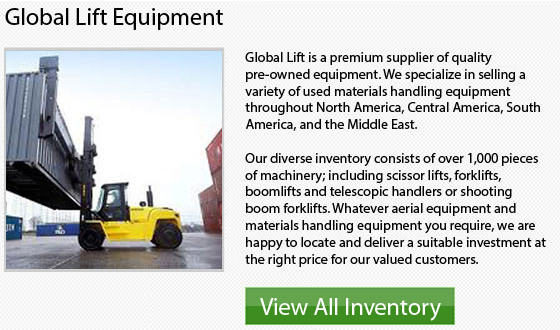
The counterbalanced forklift is a lift truck which utilizes a counter balance that is connected to the rear end of the equipment. This counterbalance effectively balances loads which are placed on the forks at the front end of the machinery. This specific design is engineered to stabilize traditional lift trucks. When it comes to electric counterbalance lift trucks, the counterweight is formed by the battery itself.
Nearly every forklift manufacturer will have in their product range, a counterbalance lift truck. These machinery will come in a wide assortment of fuel sources, configurations, and sizes. These forklifts can with pneumatic or solid tires, and be designed with 4 or 3 wheels. They could work in various applications. These forklifts are equipped with a variety of accessories. Common attachments and options consist of: fork shifts, slip sheet attachments, side shifts and hydraulic clamps just to name some items.
The counterbalance lift truck has in fact revolutionized the whole business of material handling. These machinery are vital to the shipping and receiving centers around the globe since they are utilized for loading, stacking, unloading and horizontal transport functions. The standard warehouse lift trucks are normally used for lift heights under 6 meters or 20 feet. There have been some recently designed units that are capable of lifting to heights 9.5 meters or 31 feet. The smaller 1-1.8 ton or 4000 pound forklifts are the main workhorses within the majority of warehouses. These are the most popular models which most small businesses will have. The typical warehouse counterbalance forklift is a wide-aisle truck that requires approximately 3 meters or 11 feet to turn in.
Counterbalance forklifts are not necessarily limited to the warehouse. They are normally used for carrying containers and heavy use along with basically every application in between. Counterbalance lift trucks are the most versatile and widely used of all materials handling equipment.
The counterbalanced forklift is common in numerous working environments, such as warehousing, production and retail. This is due to their durability and versatility. Several of the industrial applications include: automotive, timber, food and chemical industries.